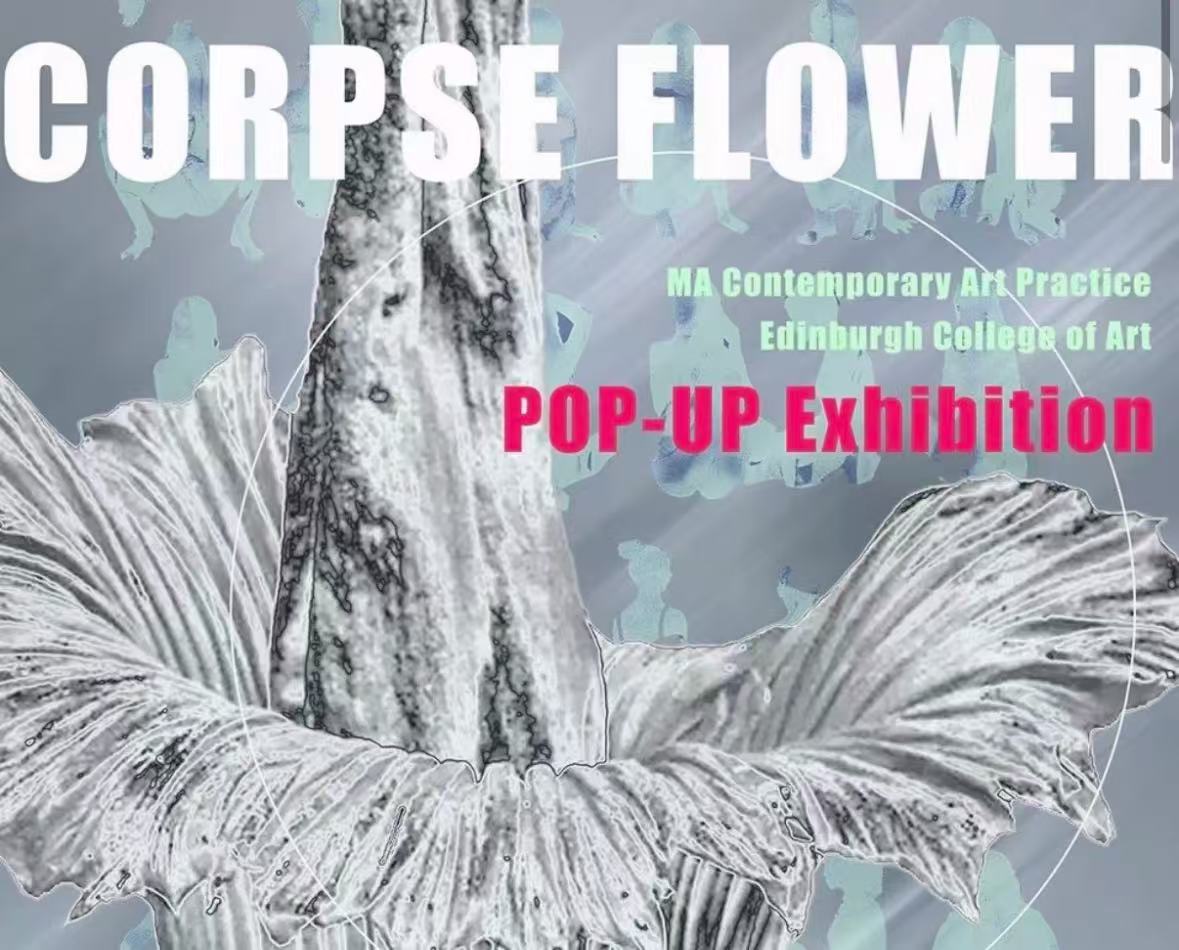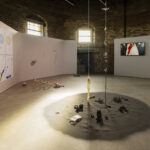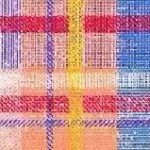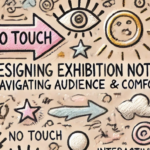On the 27th of February, I visited a themed exhibition at the Botanical Gardens organised by cap students, and I got a lot out of it. The keywords ‘plants, organisms, life, plasticity’ coincide to a certain extent with the theme of the exhibition I want to curate.
Firstly, regarding the choice of curatorial venue, the choice of a two-storey space in the Botanical Gardens as the curatorial venue for this exhibition is in fact a highly symbolic choice. The botanical garden itself is a ‘container of life’ in which organisms are constantly growing, evolving, decaying and regenerating. This natural environment has a strong conceptual resonance with the theme of the exhibition. The abundance of natural light, the window/glass structure and the plants allow the works to become more ‘growing’, the materials to become light and transparent, and even the use of plants or light projections to emphasise the possibilities of life.
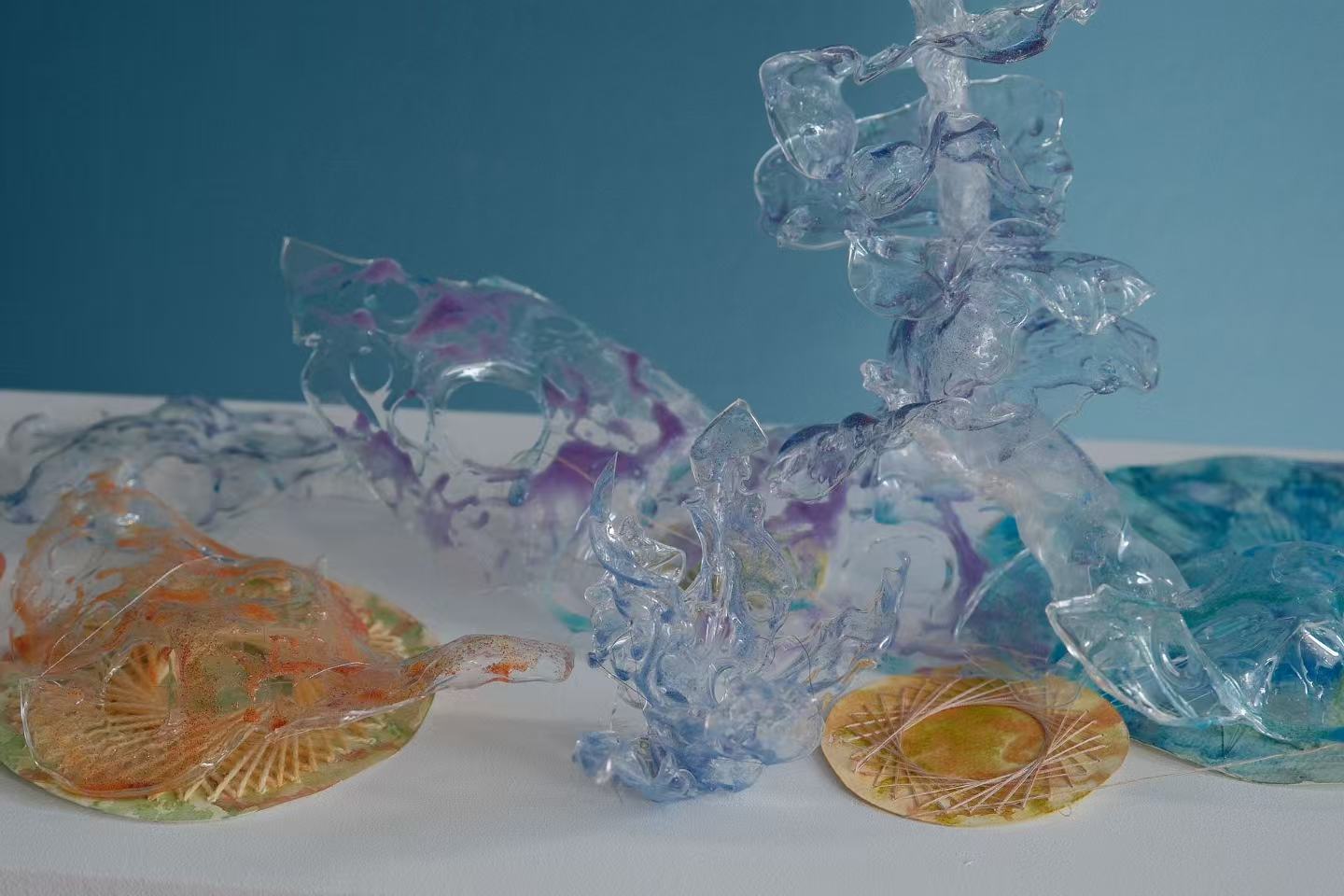
In the exhibition, the artist uses materials such as gel to shape plants, showing the different gestures, diversity and plasticity of life forms. This choice and use of materials inspired me to think about how to express the plasticity of life through the choice of materials in my curatorial projects.
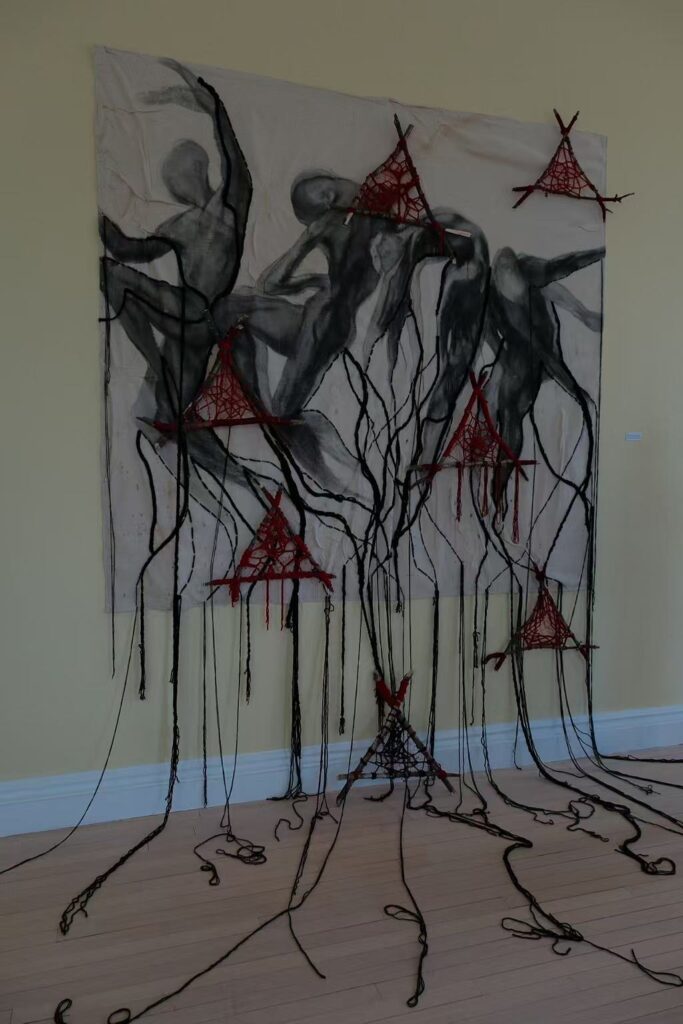
This work(figure 2) is a fusion of painting, weaving installation and spatial extensibility, giving a visual experience of the body, bondage, connection and breaking free. Multiple grey and black silhouettes of human bodies can be seen on the screen, which are intertwined with each other and seem to be dancing or struggling in a dynamic way. These bodies are not independent, but are pulled together by some invisible force, suggesting a relationship, dependence or conflict between people. The red triangular mesh structures used in the work resemble ‘boundaries’ or ‘cages’, and these forms may symbolise the social, cultural or psychological constraints that prevent individuals from truly existing independently. A large number of black woven lines extend from the main body down to the floor and even into the exhibition space, where the viewer is forced to interact with them as they look at the work.
The next one(figure 3) uses the flesh of a loofah to form a white cube on which a bee is placed, creating a subtle yet organic connection between the material and the creature. It is visually light and fragile, but conceptually full of life and tension. Loofah flesh is a natural, organic, fragile yet structured material. Its fibres and voids symbolise the ‘empty shell’ or ‘container’ state of life, which is both soft and formative. It inspires me to consider using natural or semi-decomposable materials (e.g. beeswax, gel, bio-plastic, etc.) in my exhibitions to emphasise the state of ‘plasticity’ and ‘mutability’. The bees are placed on top of a man-made ‘box’, which itself acts as an interface between the natural ecology and the man-made environment. It inspires me to think about how human intervention in natural life forms, such as through gene editing, biotechnology, and psychological/emotional shaping, can be presented in my exhibition. ‘Mutation’ comes not only from the environment and time, but also from social structures and technological influences. This work reminds me that there is no need for grandiose expressions, but that delicate and life-logical materials and combinations can tell a powerful story of ‘shaping’ in and of themselves. I also hope to present this quiet and profound sense of physical experience and life metaphor in my exhibition.
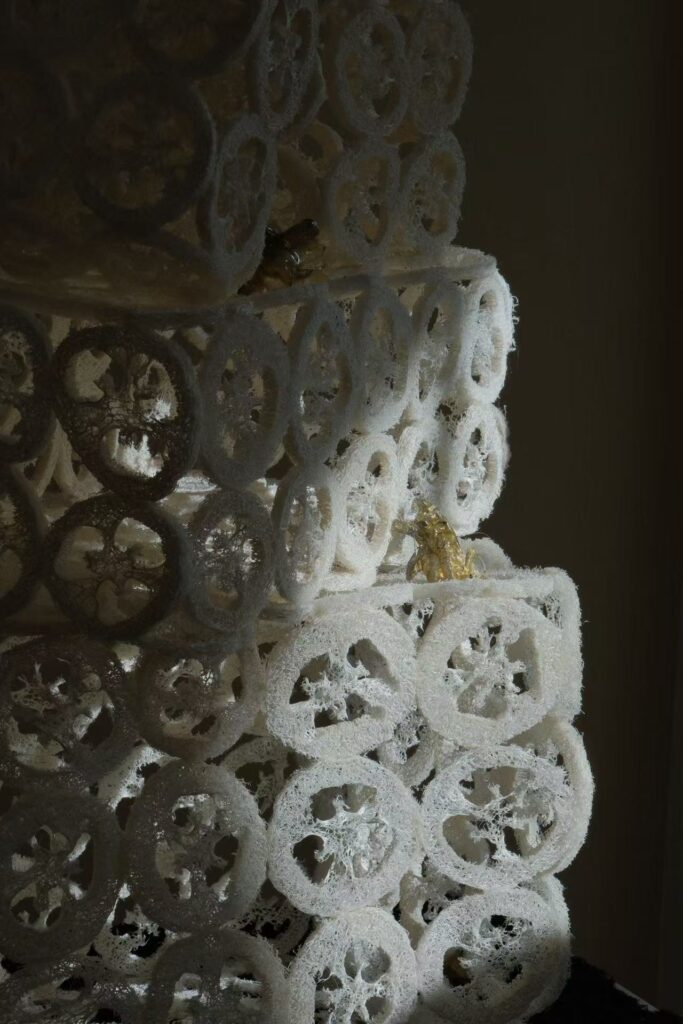
The plants themselves are used directly as raw materials, revealed in light and shadow.
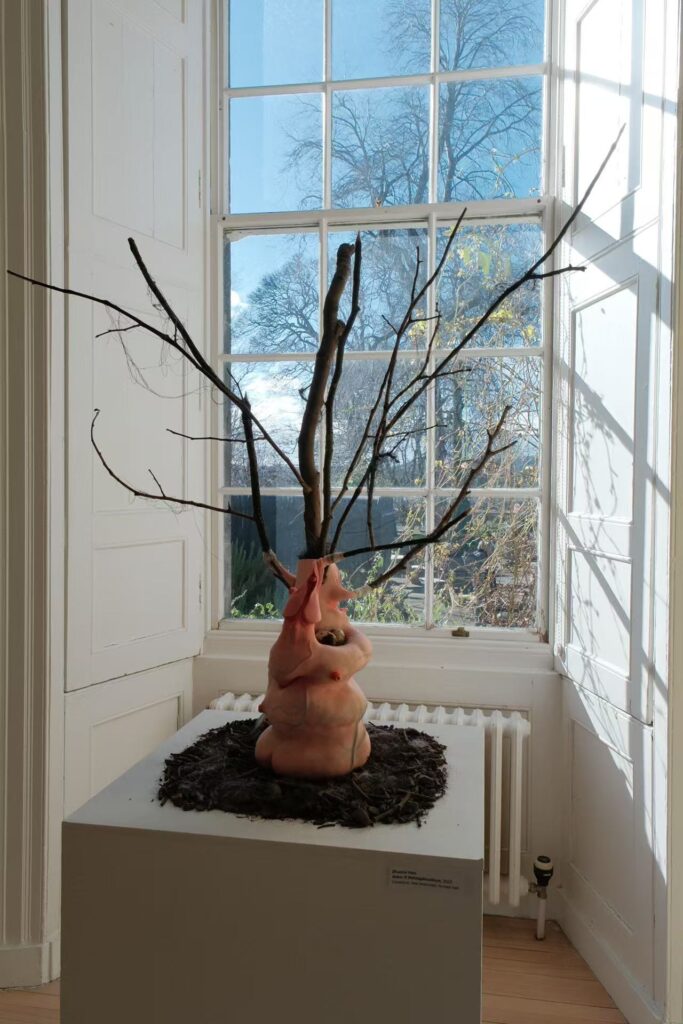
This work(figure 4) takes the human reproductive organs as a starting point, and I have to say that he has a great capacity for modelling, and the materials used are also tree branches, and human hair. In the same way as my theme, he also works with the human body. I think this work fits in very well with the theme of the fragility and plasticity of life, and it is a very creative work.
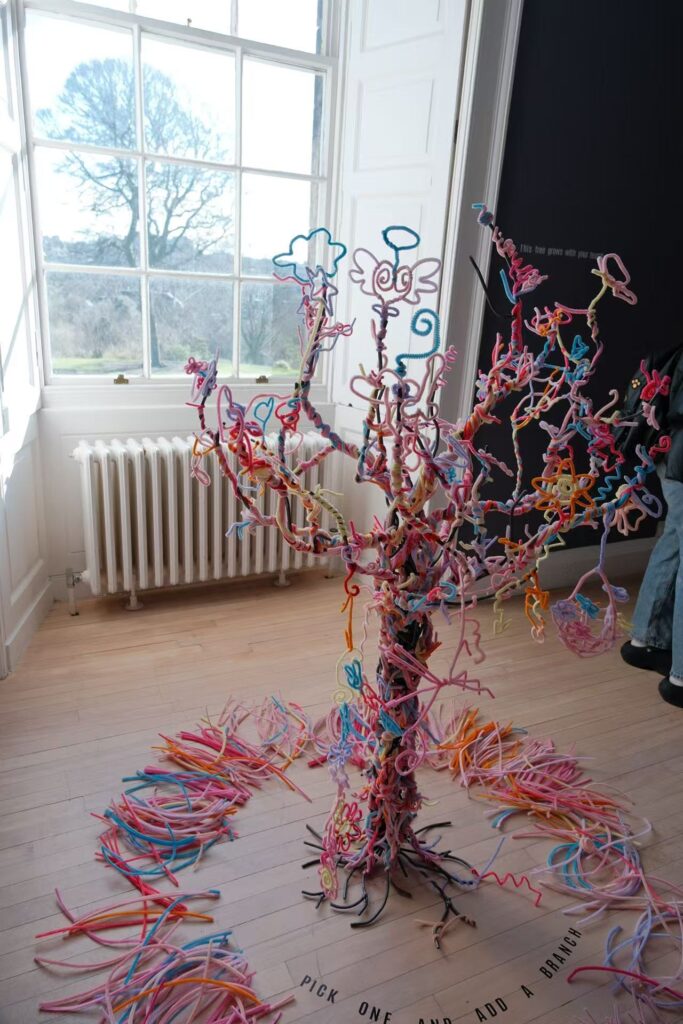
This work(figure 5) is very interactive in that viewers could make their own objects and hang them on the branches, a design that greatly engaged the audience. This made me realise that adding interactive elements to curation can enhance the audience’s sense of participation and experience, which is something I can learn from in my future curation.
Besides, I noticed that the layout of the curatorial location of the exhibition cleverly echoed the view from the window, and this design enhanced the overall nature of the exhibition and its viewing experience. This reminds me that when curating an exhibition, I should fully consider the relationship between the spatial layout and the external environment in order to create a better viewing experience.
Summary:
This visit has made me deeply appreciate that curation is not only the display of works, but also the comprehensive presentation of various aspects such as the expression of theme, the use of materials, the interaction of the audience and the layout of space. These insights will guide me to consider all aspects more comprehensively in my curatorial projects, and strive to present an exhibition with depth and attraction.
CORPSE FLOWER © 2025 by CHUNI MAO is licensed under CC BY-SA 4.0
CORPSE FLOWER FIGURE2 © 2025 by CHUNI MAO is licensed under CC BY-SA 4.0
CORPSE FLOWER FIGURE3 © 2025 by CHUNI MAO is licensed under CC BY-SA 4.0
CORPSE FLOWER FIGURE4 © 2025 by CHUNI MAO is licensed under CC BY-SA 4.0
CORPSE FLOWER FIGURE5 © 2025 by CHUNI MAO is licensed under CC BY-SA 4.0
